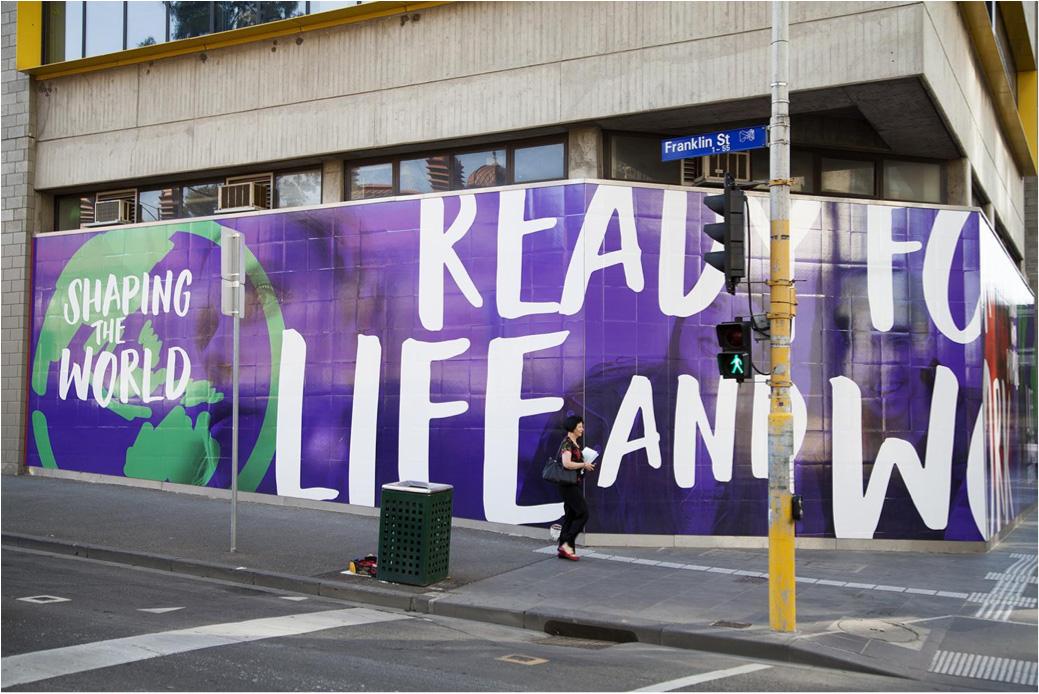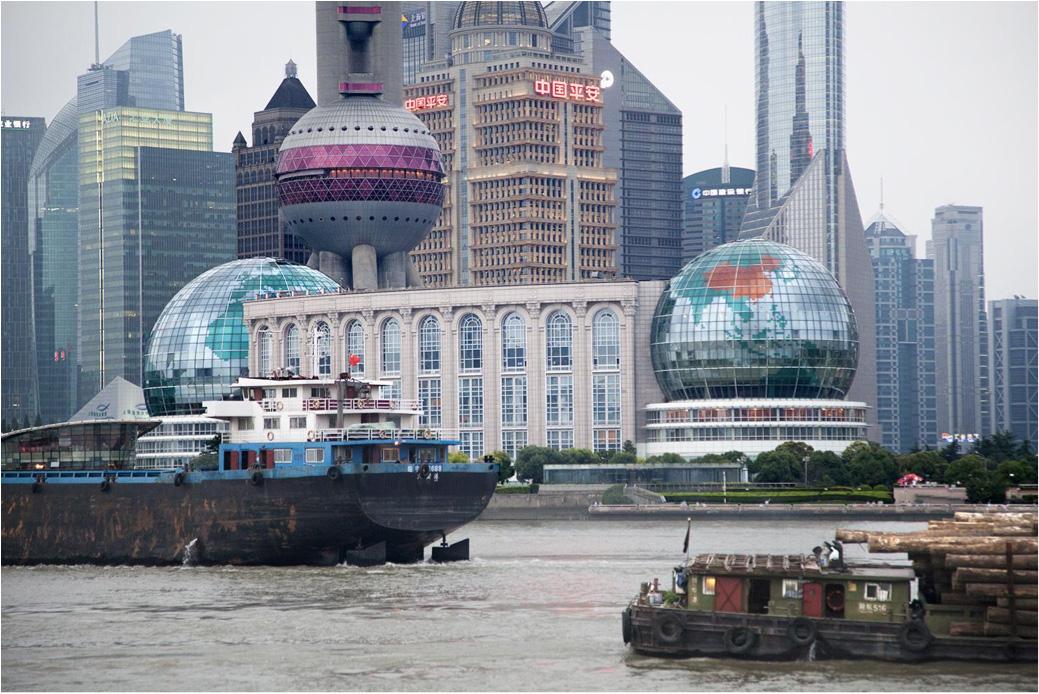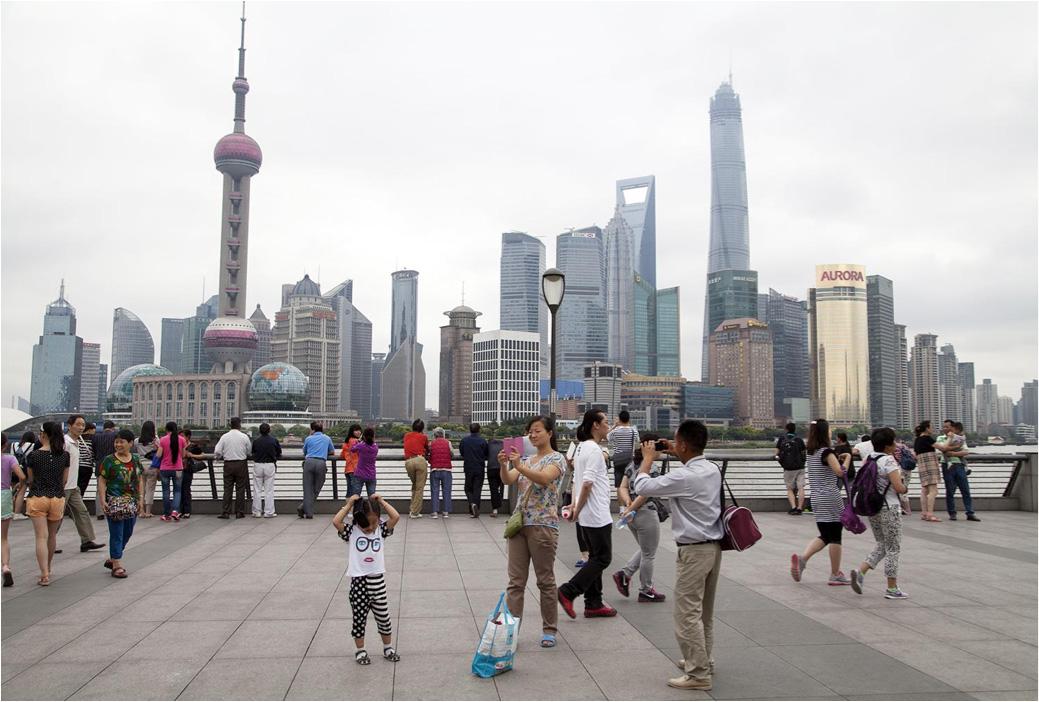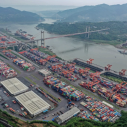A Visual Ideology of Globalization?
archive


A Visual Ideology of Globalization?
In the age of global corporate capitalism and new media technologies, a new visual global regime of representation and signification is challenging the nationalistic aesthetics of the modern self-contained nation-state. As a result, this new visual regime is affecting local-national meanings and cultural identities at local and global scales, while also re-shaping individual experience in terms of cognitive processes, aesthetic representations, and narrative strategies. In doing so, the particular types of visual images that I have defined as “condensation symbols and other visual ideological markers of globality” can be considered as part of the visual-ideological apparatus of globalization.1

Indeed, while the importance of globalization as economic process is undeniable, it would be a mistake not to consider its cultural dimensions, including the visual-ideological, as equally relevant. Yet there is a dearth of scholarship addressing this new visual regime of media representations. The alternative aesthetic approach through which my research attempts to grasp the visual-discursive (that is, ideological) side of the epochal phenomenon of globalization goes far beyond the textual-philosophical scholarship and general views on the ideologies of globalization. It does so by arguing that globalization can be better understood as a way of knowing and representing the world through spatial practice and by looking at a class of images as new figures of knowledge, arguing as well that the production, circulation and consumption of visual imagery marked as ‘global’ in media-saturated societies are increasingly affecting local-national meanings. This happens due to the socio-historically, ideologically and emotionally charged nature of these particular types of visual images, of which a very limited sample is shown here with two of them subjected to a very brief socio-political interpretation.
The visual images accompanying this essay were selected on the basis of their categorization as “condensation symbols and other visual ideological markers of globality.” I have argued that while these symbols of the global are entirely unproblematic in their representations of the cultural identity of place, they nevertheless remain effective keys to advancing our understanding of globalization as both a material and ideational process. As empirical evidence these images were collected during photographic fieldwork and they are drawn from The Visual Archive Project of the Global Imaginary (2009-ongoing), an online Web-based extension of the author’s research project (2007-ongoing). The visual archive constitutes a repository of thousands of items of empirical evidence witnessing cultural-ideological change collected over nearly a decade in locations across the planet (see also Durante 2014).

These images of the ‘global’ contribute to a better understanding of cultural-ideological change at local-global scale. They do so by condensing, in single events or visual images, spatial-symbolic scales that used to be fixed on the national but are now increasingly reflecting multiple levels mediated by the global. In this respect, I take into consideration the actual symbols—signs, figures, images, narratives and words, that is, the material forms in which meaning is circulated and the socio-historical contexts in which these symbols are produced. It is evident that scholarship about the ideological production of globalization still remains primarily at a theoretical (textual-philosophical) level of investigation,2 often missing the ways in which globalization is symbolically and socially produced in everyday life.
With the term ‘visual-ideology’ this study understands a particular socio-historical system of mixed-media formations, the visual regime of representation and signification that provides frameworks and narratives that ideologically orient and guide people’s practices in everyday life. What is more, these particular types of images contribute to constructing people’s koinē aísthēsis (common sense) of the ‘global’. Thus, it can be argued that, beyond the modern geopolitical hierarchy of scales, globalization can be better understood and investigated by taking due account of its elaborately grounded visual-ideological dimension.
The production, circulation and consumption of visual imagery marked as ‘global’ in media-saturated societies are increasingly affecting local-national meanings.
To grasp this new visual regime of representations and significations that has already altered our way of perceiving and being in the world, it is necessary to explore the new beginnings, focus on what still remains from the modern nationalistic political ideology of the twentieth century as part of the grand narrative of globalization, and seek to better understand these new figures of knowledge in the disorderly flux of the present to make sense of their socio-political and cultural implications. I proceed with an analysis and interpretation of two of these cultural objects in hope that these case studies help to move from merely exemplifying the abstract argument (the images displayed in their own right) to problematicizing it by investigating their character as agents of ideological change.


Shanghai has dramatically changed in the last two centuries, transformed from a fishing village into a global financial hub of the People’s Republic of China, the fastest growing economy and a pillar of the new world order. This transformation has been punctuated by iconic landmarks such as the Shanghai International Convention Center (SICC), which is renowned for its unique style and “ingenuous” simplicity. The Center is located in the Lujiazui Financial District of Pudong, facing from across the Huangpu River the eclectic vision of the Bund district that combines colonial and postmodern styles. The particular structure of the blazing building, with its neoclassical lines and giant glass globes, symbolically links Shanghai-China (the local-national) to the world in relation to the historical and hybrid skyline of the city (the Bund). This is achieved by the Century Hall on the west, shaped as a globe with the world's map depicted on it, and the Riverside Hall on the east, another globe representing China's territory. The building in the middle links and articulates the local-global tension through the symbolic ascension of the ‘global’ over the local and national, represented by the two giant globe structures and echoed by the adjacent love-it-or-hate-it striking pink bubbles of the oriental Pearl TV Tower. In this respect, it can be observed that the distinctive architectural style of the SICC building functions ideologically in that it not only reflects the rise of Shanghai from small fishing village to the current global city, but also embodies the powerful role China plays as a leading country in the global economy and the new world order. Through the meaning-making process at the site of viewer reception, this architectural object helps us better understand how the shift from the national to the global in Shanghai is symbolically and socially produced. From this perspective, the iconic Shanghai building is part of the visual ideological apparatus of globalization.

Although this architectural statement in many respects is intended to speak to a global cosmopolitan class, it is also embedded in the everyday experience of urban life. Given the population density of the city and the diminutive size of living quarters, citizens commonly promenade along the river during weekends and holidays, proudly absorbing the global status of their city and (consciously or unconsciously) imagining relations between the global and the local. Likewise, domestic and foreign tourists stroll the riverside and take photos that contribute to reimagining spatial relations.
A similar dynamic of image consumption is at work in Dubai where Global Citizen offers glossy magazine layouts that provide perspectives on people “that matter most to ultra and high net worth individuals in the Middle East.” The magazine cover regularly relies on linking iconic (popular) people such as Oprah Winfrey to the magazine title itself, Global Citizen, performing a local grounding of the meaning-making process at the level of the viewer and contributing to a “common sense” imaginary of the global as a proximate and tangible system of images. The term ‘global citizen’ generally defines a person who places his/her identity within a global community beyond the identity as citizen of a particular nation or place, which in the case of Winfrey is the United States of America. Indeed, the very notion of global citizen expresses the idea that self-identity transcends the geo-political borders of the modern self-contained nation-state and that the human community, by its very nature, is interdependent and a whole. This visual marker of globality clearly displays its socio-historical, ideologically charged, character.

In the Global Citizen example too, it can be said that condensation symbols and other visual ideological markers of globality become necessary thinking tools for better understanding the socio-political and cultural implications of the epochal phenomenon of change and transformation called globalization. Therefore it can be argued that these new figures of knowledge, once critically approached, make visible the systems of values and the ideologies embedded within them, of which market globalism—the economic core of neoliberal ideology—appears to be the most dominant one.
These particular types of images contribute to constructing people’s koinē aísthēsis (common sense) of the ‘global’.
I am deeply aware that the subjective gathering and selection of the empirical evidence to support my methodology opens it to criticism—that the investigation is “‘non-scientific,” that it engages in a “reduction” of the aesthetic experience of globalization to its sensorial, subjective practice. However, this study does not see any rupture or gap between a subjective or an objective approach to the phenomenon. On the contrary, this research sees a continuum between scientific understanding and subjective experience. I also stress that subjectivity, at any given point in time, represents the condition for every objective and specifically grounded understanding of the world.
Still, the research suggests that the ‘surplus of values’3 associated with these images could allow scholars of the theory of ideology to look at the phenomenon at a meta-ideological level, while also allowing researchers in the social sciences to better understand globalization’s symbolic ideological power. Furthermore, these new figures of knowledge can assist teachers in the transdisciplinary field of Global Studies4 to exemplify the abstract idea of globalization by making visible the ideological shift from the national to the global, one of its most significant characteristics at the dawn of the twenty-first century.
1 Durante, Tommaso. 2016. “On the Global Image: Globalization as a Visual-Ideological
the Global Condition. London and New York: Rowman & Littlefield International, 51-63.
2 Steger, Manfred B. 2009. Globalisms: The Great Ideological Struggle of the Twenty-first
3 Mitchell, W. J. T. 2005. What Do Pictures Want? The Lives and Loves of Images.
4 Steger, Manfred B. and Wahlrab, Amentahru. 2017. What Is Global Studies? Theory
Source credit for all images is Tommaso Durante, The Visual Archive Project of the Global
1. The World on Sale, Bus-stop advertisement (detail) Melbourne, Australia, 2016
2. Shaping the World, RMIT University advertisement, City-Campus, Melbourne
3. Pepsi Max The Globe, Cans pack, Melbourne, Australia, 2016
4. The Bund as seen from the Oriental Pearl Tower, Shanghai, PRC, 2014
5. Shanghai International Convention Center (SICC), PRC, 2014
6. Pudong as seen from the Bund, Shanghai, PRC, 2014
7. Global Citizen magazine, Abu Dhabi, 2013



